Fermented mustard is assertive, acidic, and deeply complex in its flavor. It's also one of the easiest fermented vegetable recipes you can make. That's because it takes about five minutes to stir the ingredients together, and then you let all the beneficial bacteria finish the work.
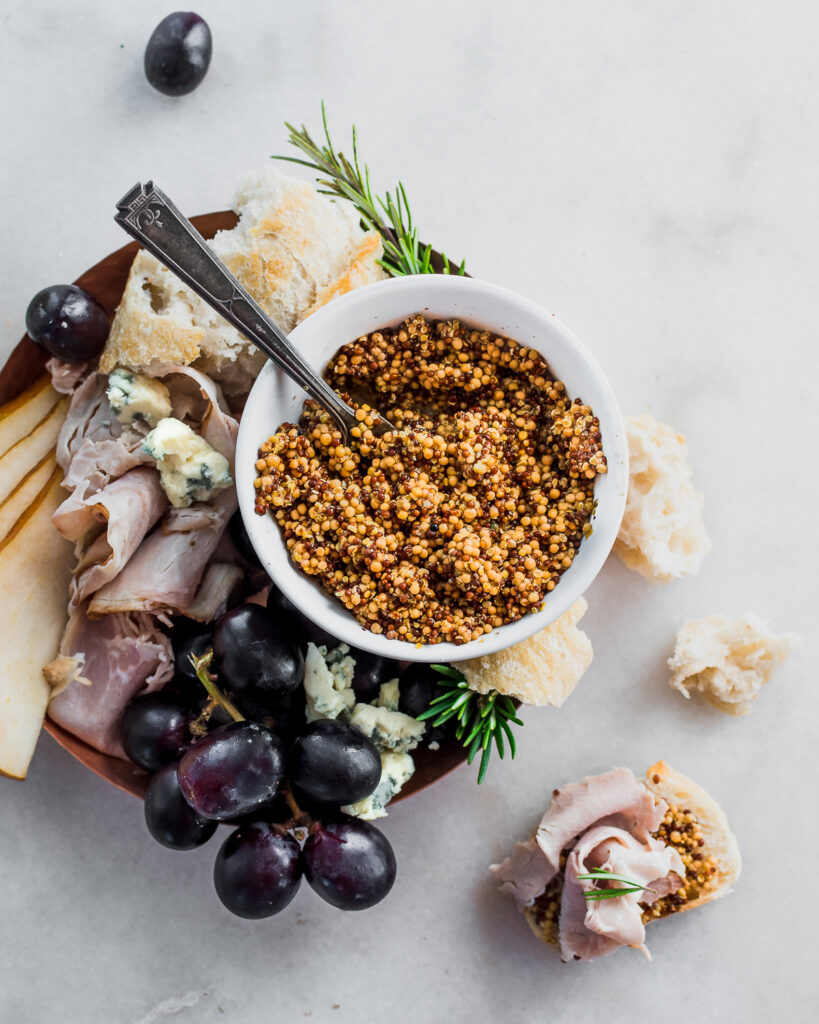
Over a few days, the bacteria will transform the mustard seeds and sea salt into a savory condiment that tastes amazing slathered on whole-grain sourdough bread with aged cheese and shaved ham.
What is it?
Fermented mustard is a condiment with a zippy, sour flavor that you can use just like regular mustard. Making fermented condiments such as this mustard, or even fermented hot sauce, are a great way to incorporate more probiotic foods into your diet regularly.
You begin by mixing mustard seeds, ground mustard, salt, and starter culture together. Next, you let it ferment at room temperature for about three days. Then, you can serve it just as you would regular mustard.
Which ingredients do you use?
At its simplest, fermented mustard needs only mustard seeds, salt, and water. However, to make delicious homemade mustard, you'll need to jumpstart fermentation with a starter culture and add a little vinegar for greater acidity. The tinies slip of honey can also round out the flavor of both the mustard and the vinegar.
Do you need any special equipment?
You'll want to grind your mustard seeds coarsely before fermentation. Grinding them releases their aromatic compounds, and it also makes it easier for them to make a spreadable condiment than using the seeds whole. So, pick up a spice grinder or use a mortar and pestle.
You'll also need a jar to both ferment the mustard and store it after fermentation. While for bigger fermentation projects, such as beet kvass or kimchi, I recommend using a fermentation crock with an airlock or other seal. But, since mustard only needs a few days, you'll be fine using a small pint-sized canning jar with a tight-fitting lid.
Tips for fermenting mustard
Making fermented mustard takes only five minutes of active time in the kitchen, just long enough to grind the seeds and then stir them with the sea salt and the liquid ingredients. While it's pretty straightforward, you might want to keep these tips in mind.
- Start with high-quality spices.
- Grind the mustard seed coarsely, just enough to crack them.
- If it looks too runny, it's just fine. Really. The mustard will look right after you make it, but it will thicken with fermentation.
- Use a starter culture to kickstart fermentation. It can be fermented vegetable brine, kombucha, jun tea, or a packaged starter like this one.
- Make it your own by adding chopped garlic, shallot, or herbs. This is a flexible basic recipe. And once you master the basics, you can start more complex versions.
- It's done in about three days but can ferment longer if you prefer a more complex flavor.
Choosing a Starter
Starter cultures are rich sources of live bacteria, and they kickstart fermentation. While not all ferments need starters, condiments like mustard benefit from a little boost. That's because seeds and spices are slow to ferment without a starter. Any rich source of live cultures will work well.
Brine from Fermented Vegetables. This might be sauerkraut juice or fermented pickle brine. You can use the brine of any fermented vegetable as a starter culture.
Kombucha. Kombucha contains both acetobacter and lactobacillus, and its vinegary flavor works well in mustard.
Yogurt or Kefir Whey. Fresh whey from yogurt or kefir is a rich source of beneficial bacteria, and you can use it as a starter culture.
Packaged Starter Cultures. Packaged starter cultures contain specific strains of beneficial bacteria that support fermentation. Since they come as a powder, you'll need to dissolve the packet in ¼ cup of warm water to make this recipe.

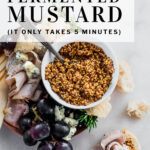
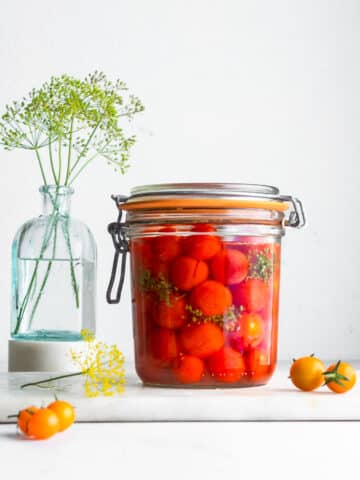
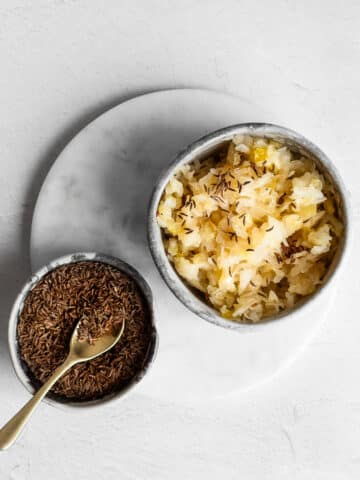
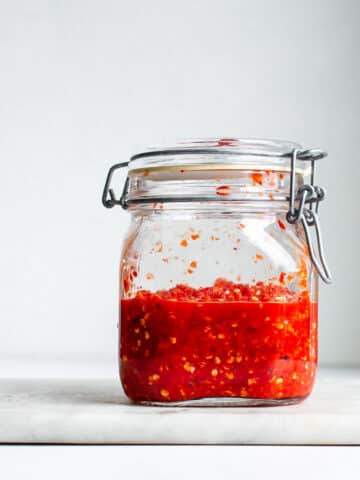
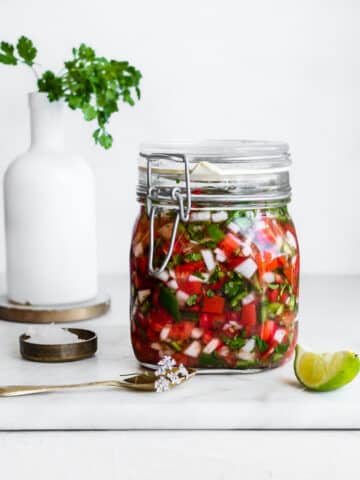
Joan Stirlen says
Hi Jenny
Thanks for this recipe. I’m new to fermenting: just kraut ( German and red kraut) and cranberry relish and Mayo. Can I use the liquid from commercial (FAGE) plain yogurt as the starter for this mustard?
Also, many thanks for your great website and recipes! I learn a LOT from them!
Julie Majors says
I’m curious about why to blend before soaking/germinating? Seems to me that soaking first would increase nutrients.
Jenny McGruther says
Hi Julie!
There's no real value in germinating the mustard seeds before fermenting them. Remember, they are being "soaked" during the fermentation process.
Ron says
OMG!😍🎉 Black mustard prepare thyself!!!
Dana Johnson says
Made this for the first time with a mix of yellow,brown,and black mustard seeds.(a double batch ) I used brine from my last batch of dill pickles, and home made persimmon vinegar. I’ll never buy mustard again! Just the right amount of twinge for the nose and by far the best mustard I’ve ever had. I like the graininess, but to get it more spreadable I used our immersion blender to cream it up a bit. Worked perfectly.
Cece says
Hi Jenny, thanks for this recipe! I've made it several times and it's so easy and turns out great. I did note that the instructions don't say when to add the salt. SInce I've fermented stuff before, I knew to add it with the water and starter culture, but you might want to clarify for others.
Hayley Pisano says
Yes tY I was looking for this in the comments!
Deborah Lebovic says
Doesn’t the vinegar destroy the beneficial bacteria produced by the fermentation process.
Jenny says
Hi Deborah,
No, it doesn't.
Sarah says
I always make homemade mayo for the reasons you listed and I’m so excited to start making homemade mustard too! Thank you for everything you contribute to healthy living. It’s really appreciated and our family is so grateful?☀️?
Jenny says
Always glad to help!